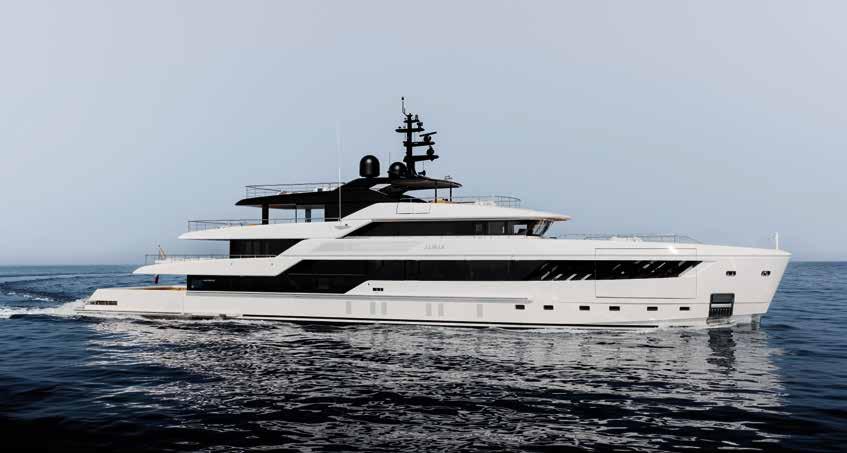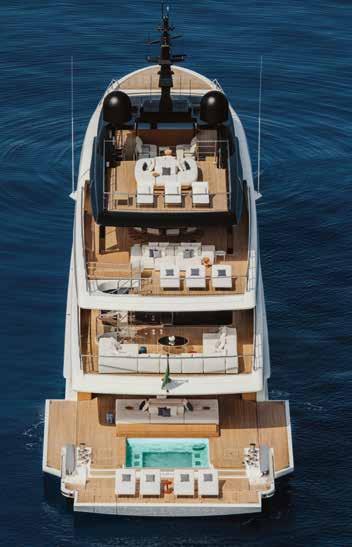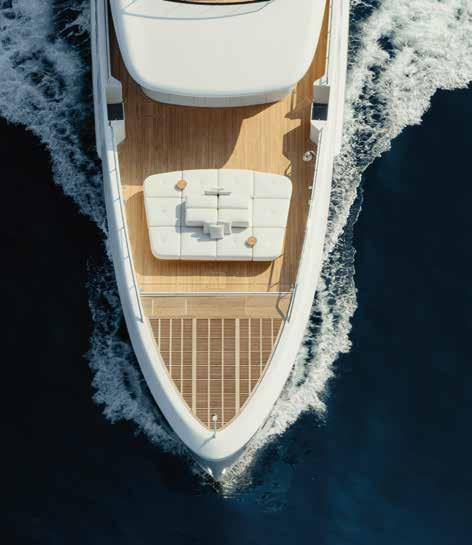





















by Samuela Urbini, ph. courtesy by ZIP



“
As an architect my academic training and family background have enabled me to develop a more comprehensive view of the yacht world. The starting point in my thinking as a designer is to describe yachts not as magnificent floating sculptures but as a large container for life”. Bernardo Zuccon’s words reflect his great passion and knowledge. Along with his sister Martina he is at the helm of the Zuccon International Project, a multidisciplinary architecture and design studio founded in Rome in 1972 by their parents, Gianni Zuccon and Paola Galeazzi, also architects who left their mark in the international yacht-building industry and other areas besides. The studio currently comprises 24 people, including civil architects and industrial designers, and collaborates with prestigious yards like Sanlorenzo, Bluegame, Ferretti Yachts, CRN, Custom Line, Perini Navi and I.C. Yachts. He has just won the Compasso d’Oro for the Sanlorenzo SP110, launched in 2022. “Yachts aren’t houses. They’re a different kind of place. They have a deep relationship with people, so a large part of my design research revolves around what I like to describe as ‘Areas of living”, says Zuccon. “Without research our design can’t evolve”. Areas for living, containers for life and the importance of the individual and space, crucial for the Roman architect, are all subjects that have taken shape in a yacht like the 50 Steel by the Sanlorenzo yard and not remained simple theory. “Already on the 44-metre Alloy I’d worked on expressed the concept of hybrid
The breadth of vision of Bernardo and Martina Zuccon’s yacht design has inspired the creation of the 50Steel by Sanlorenzo. Its exterior lines lend it the appearance of a traditional yacht with the classic deck layout, while the interior reveals a surprising division of spaces with floors on different levels linked by steps that disrupt expectations. At the back of the saloon, for example, a step leads down to the lower level, the location for a gym and spa, while to starboard another step leads to the dining room
technology, which I mean as the ability to combine different yacht types. The exploration of these areas for living is based on the architectural theories put forward by Adolf Loos in the early 20th century. He talked about Raumplan, the idea where the organisation of a residence or other space could be obtained through a functional differentiation created by offsetting the levels without necessarily installing internal partitions”. As a result, this generates a difference between a public dimension, visible from the outside, and a more expressive, complex and unexpected private dimension that can only be seen by those living inside it. In other words, this revolution involves the content but not the container. This is exactly what we saw on the 44 Alloy and now comes into fruition on Sanlorenzo’s 50 Steel, which Zuccon calls the symbol of this process. The yacht’s



external lines respect the marine environment and embody a restrained luxury, while its interiors create a surprising illusory effect. “I tell a new story”, says Zuccon. “Here not everything is taken for granted, you can lose yourself in it, because in this division of spaces you no longer know what deck you’re on. The saloon is unique and is closely connected to four offset levels connected by a system of stairs. We have three sundecks on the 50 Steel at three different heights. Why do we call them Sundeck 1, 2, 3? We had to change the names of the decks because there’s no longer a hierarchy, they’re places that the owner chooses how to describe on the basis of the function he or she assigns to them”.
On the level of construction, he had to examine the structural aspect closely to create the stiffness required to cope with the empty spaces inside the yacht. For example, the interior height of the saloon is four
and a half metres, not two. The floors – calling them decks would be impossible – are linked by steps, a choice that’s been open to criticism.
“I’m not saying yachts have to be like this, but I’m convinced that there’s a demand for more traditional yachts, just as I believe that there’s room for experimentation in yacht typology. This allows us to modify some established balances, giving some more ambitious clients the opportunity to enjoy unusual spaces”.
This adventurous spirit is shared by the Sanlorenzo yard and Zuccon International Project, which have collaborated on many projects that currently extend until 2028. The studio is also involved in important nonnautical projects, from product design to architecture – and a clothing line could also be in the offing. “From spoon to city”, as Ernesto Nathan Rogers said in 1952 when describing the scope of design.